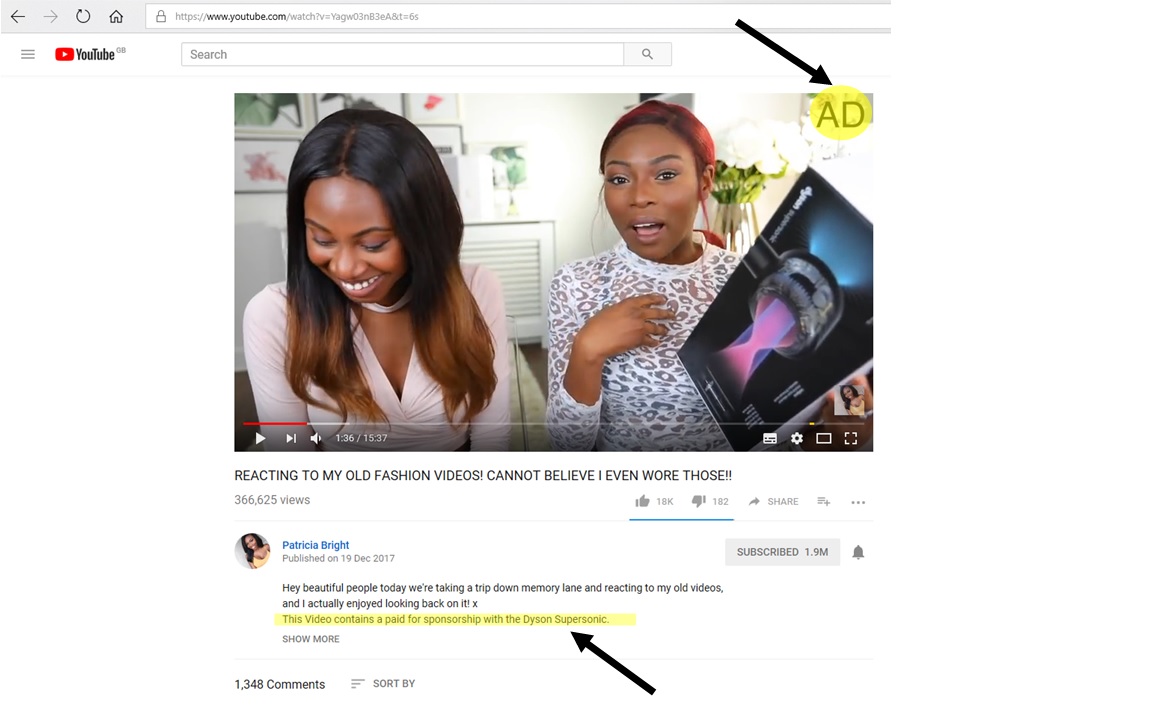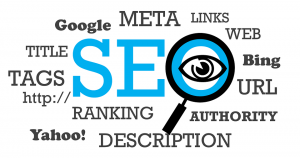A Chatbot is an online virtual assistant which is motorised by artificial intelligence, which intends to stimulate a discussion with a customer (Poggi, 2016). These chatbots appear as an interactive chat engine which can answer customer queries and give customers advice, in a bid to provide customers with a quicker response speed than they would receive through online channels such as social media and email. This blog post is going to evaluate the risks and benefits of using chat-bots on websites, as well as tips and tricks for anyone reading who is thinking about using chatbots themselves.
What benefits are associated with Chatbots?
Firstly, Poggi (2016) discussed how in fact Chatbots allow for a personalized conversation between the consumer and the brand, whilst providing an ease of access mode of communication for the customer to talk to the brand within the timeframe of a few seconds. Secondly, she mentioned views from Jeff Malmad, the managing director at Mindshare in North America and how he views chatbots as a means of communication which is quicker than other forms of social media, such as Twitter and Facebook. Additionally, Malmad also indicates that Chatbots can benefit brands by providing them with data from online conversations between the bot’s and the customers, in order for the brand to get an idea of what their customers want and expect from their services.
Furthermore, Han (2017) stated that Chatbots also have the potential to train new employees for companies. Han (2017) also argued that chatbots have the ability to send humans regular reminders, whilst providing them with resources and encouragement when people are making progress. This is interesting an interesting concept to think about, as it sounds like Chatbots could potentially even manage employees in the future if human managers cannot devote their time to each individual employee they are accountable for. So, chatbots aren’t just beneficial for the external stakeholders such as the customer, but also for internal stakeholders like employees.
In Contrast, what are the risks associated with Chatbots?
Even though chatbots show a great potential and a futuristic scope on how the future of customer/brand communication could mainly consist of, there are a few things to consider when choosing to use chatbots. Firstly, as previously mentioned, Malmad (2016) discussed the advantage of gathering consumer data through the chatbots, if consumers are made aware of this, this could deter them from visiting a site if they don’t like the thought of being observed.
With all of the latest scandals in 2018, including Facebook stating that 87 million users could have been victim recently of a huge data leak. This along with uncertainties about the forced use of Cookies on websites can additionally make customers feel anxious and worried to even communicate with a chatbot, especially if they are made aware that anything they say could be stored and used as data for the company.
Temkin (2018) also pointed out that another risk associated with the implementation of chatbots is that even though the concept of chatbots are that they are convenient and could be a huge asset to an online site, they however pose a major security risk for consumers, if they are not properly secured. Additionally, Jacobs (2018) has strongly urged that chatbots cannot under any circumstances turn into a bad customer experience, which he labels as ‘IVR hell’. Jacobs suggests that if chatbots get over programmed with options and responses, it could mean that a customer could easily get frustrated in a conversation with the chatbot if it asks too many questions or repeats itself throughout different points of the conversation. Jacobs suggests to avoid this from happening, it is essential that companies design their chatbots to value their customer’s time, whilst removing frictions that are associated with robot technology. Additionally, it is also essential to make the chatbots as realistic as possible to avoid customers feeling distant from human to human interaction.
Important Tips when implementing Chatbots:
Rosenthal (2017) has created a 6 tips based on how to improve engagement levels through chatbots companies.
The first tip is to make a great first impression to the customers, this is important as it can deter people from talking to chatbots if they send a paragraph with wrong punctuation. The key is for the Chatbot to introduce itself simply and how it can help the user in less than 160 characters.
The second tip is to know your audience and stay true to your brand. Rosenthal stated that it is hugely important to reflect your brand personality when conversing with a customer, as it makes it feel like a genuine conversation between two humans instead of a robot.
Thirdly, Rosenthal reiterated that good grammar is key to keeping a conversation going as it makes the customer feel like they are engaging in an intelligent conversation.
The fourth tip emphasises the importance of not over-promising the capabilities of what the chatbot can do. If a chatbot gives false or difficult to follow instructions or advice, the customers will more than likely leave the chat and may even block the bot in the future.
The fifth tip consisted of keeping all conversations short and sweet, as the chatbots are only there for brief guidance and advice, so it is important not to bore the customers.
Lastly, Rosenthal stated that the flow of the conversation is like an art form and should be thoughtful towards the customer. By implementing this correctly, this will make the customer feel satisfied and like they have had a pleasant customer service experience by the end of it.
I hope that this article has helped highlight many important factors to consider when implementing and using chatbots, as well as any associated risks. Below this article lists some different links to different sources online which are great with explaining the concept of chatbots further.
Thanks for reading!
Links to additional information:
Tips for Creating a Great Chatbot: https://www.entrepreneur.com/article/293320
What Chatbots Can and Cannot Do for Retailers: https://retail.emarketer.com/article/what-chatbots-and-cannot-do-retailers/59725114ebd40005284d5cda
6 Tips for Building A Compelling Chatbot (Even if you are not a programmer): https://www.clickz.com/6-tips-for-building-compelling-chatbots-even-if-youre-not-a-programmer/113134/
References:
Han, V. (2017) Are Chatbots the Future of Training?, Talent Development, Vol. 71, No. 9. Available from: <http://web.a.ebscohost.com.ezproxy.brighton.ac.uk/ehost/detail/detail?vid=1&sid=40c2f3f2-af66-4243-a3cd-f5b420c1d47a%40sessionmgr4009&bdata=JnNpdGU9ZWhvc3QtbGl2ZSZzY29wZT1zaXRl#AN=124943602&db=buh> [Accessed 01/04/2018].
Jacobs, I. (2018) ‘Chatbot Hell’ Can’t Become a Thing’, CRM Magazine, Vol. 22, No. 2. Available from: <http://web.b.ebscohost.com.ezproxy.brighton.ac.uk/ehost/detail/detail?vid=1&sid=c8b36629-4732-4727-9a0f-1917f4f9ce44%40sessionmgr104&bdata=JnNpdGU9ZWhvc3QtbGl2ZSZzY29wZT1zaXRl#AN=128230061&db=buh> [Accessed 31/03/2018].
Poggi, J. (2016) CMO’S GUIDE TO CHATBOTS, Advertising Age, Vol. 87, No. 24. Available from: <http://web.a.ebscohost.com.ezproxy.brighton.ac.uk/ehost/detail/detail?vid=1&sid=f4580dfa-2aa8-48e3-a950-a73327295093%40sessionmgr4009&bdata=JnNpdGU9ZWhvc3QtbGl2ZSZzY29wZT1zaXRl#AN=120362725&db=ufh> [Accessed 04/04/2018].
Rosenthal, V. (2017) Chatbot Engagement: 6 tips and tricks for growth, Forbes, Available from: <https://www.forbes.com/sites/vivianrosenthal/2017/07/07/chatbot-engagement-six-tips-and-tricks-for-growth/#400491437673> [Accessed 31/03/2018].
Sky News (2018) Potentially all Facebook users hit by data scandal, The United Kingdom, Sky News. Available from: <https://news.sky.com/story/potentially-every-facebook-user-had-data-scraped-11317542> [Accessed 05/04/2018].
Temkin, A. (2018) Take care what you share with your financial chatbot, London, The Times. Available from: <https://search-proquest-com.ezproxy.brighton.ac.uk/docview/2019995947?pq-origsite=summon&https://ezproxy.brighton.ac.uk/login?url=accountid=9727> [Accessed 02/04/2018].



















